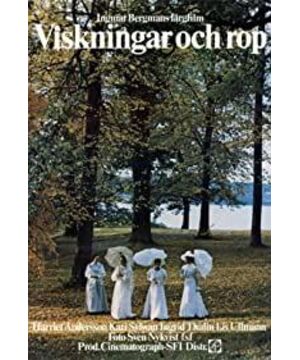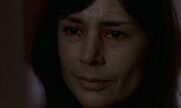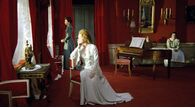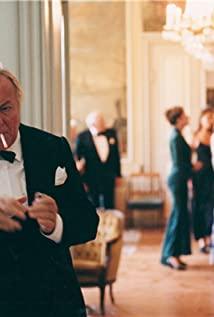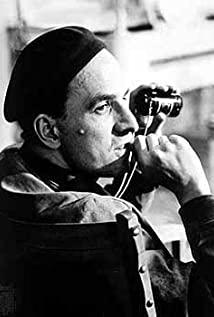Generally speaking, red is too overbearing and can only be used as a foil, but in this film Bergman boldly covered the entire background with high-saturation red, and made the characters wear black, white, gray, and colorless. clothing. This kind of anti-routine art design obviously has symbolic meaning in it. It does not limit the expansion of red at all, so that the background color completely overwhelms the characters with a large blank area, creating a strong and depressing Atmosphere. Agnes’s white dress describes the pale and sickness, and Rowling’s black is a metaphor for the coldness of her heart. Closed mood).
At the same time, lighting is also one of the protagonists of visual language. Many shots in the film use Rembrandt's light and shadow method. Candlelight and natural light are used as the main lighting methods to strengthen the light and dark shades of the characters' faces. It greatly enriches the plasticity in the picture, and it looks very like a Renaissance oil painting. When Anna accepts Agnes, the lens is very tense, the lighting is very oily, and the posture of the figure pays tribute to Michelangelo's famous sculpture "The Pieta".
In the development of the plot, the shots often quickly advance to close-ups of the characters to emphasize the emotional effects of the subjective shots. The clock lens that explains time accelerates the rhythm and is an important component. When the lens is gradually pushed to close-up or close-up, the large red white space in the background plays a role in strengthening the main character. There is no debris to distract the audience, even shallow focus photography is not needed. The eyes of the characters broke the fourth wall and directly talked to the audience, making the language lines more penetrating across dimensions. The Rembrandt triangle lights that appear from time to time add the stage drama of the characters and further enrich the picture. Therefore, the close-up shots in the movie are really masterful, full of information from the camera's voice.
The story line is very simple. The red full-screen blank is used as a transition transition in the middle, which joins the two timelines of the present and the past. The theme "calling and whispering" is more obscure, and should refer to the inner mental state of each main character. When Agnes was dying, all the sisters did was shouting and whispering, and only the maid Anna nursed her tenderly. I also said earlier that the scene that pays tribute to Michelangelo’s "The Pietà" means that although Anna is a servant, she finally moves towards the chastity of the Virgin. This kind of personality shaping makes the character change. To be three-dimensional, Dostoevsky's "Crime and Punishment" also used a similar technique.
At the end of the film, Agnes died and Anna was fired, which meant that the family had expelled the Virgin of Redemption, which gave the story a more sorrowful meaning (I remember Faulkner’s "The Sound and the Fury" "The dismissal plot of the black maid Dilsey also expresses the decline of the Compson family from the side). In the end, Anna read Agnes’ diary and the timeline went back to the past. The boring indoor scene in front disappeared completely, replaced by the beautiful and moving outdoor natural scenery. The three sisters and the maid walked happily outside. The beauty may only exist. In the past. At this time, all "calls and whispers" will disappear...
View more about Cries & Whispers reviews


